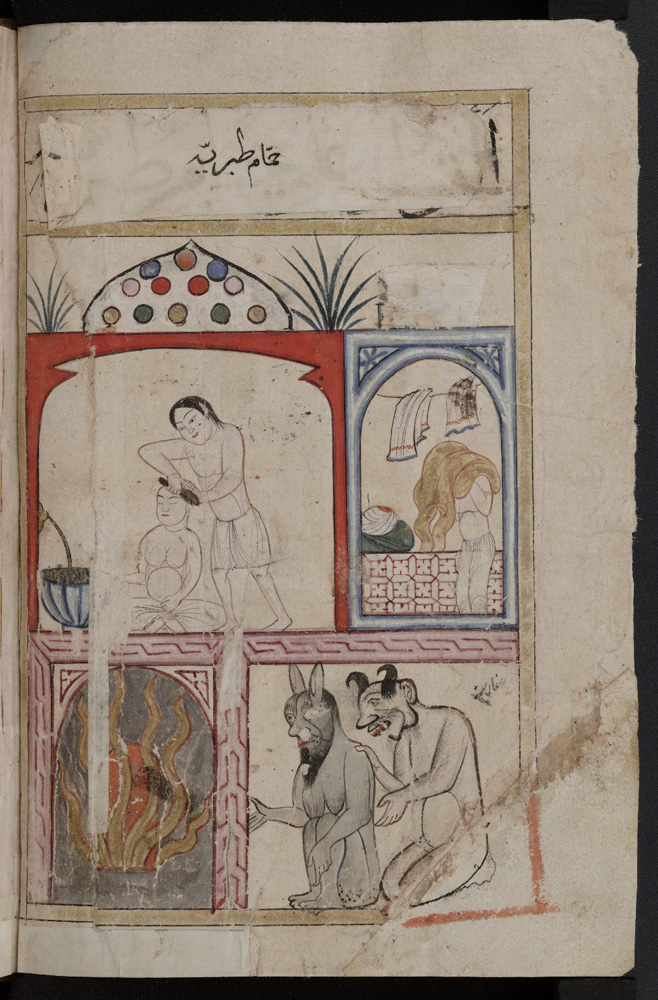[...]form of
public expression of feelings
(sociologically)
 sharm
sharm
sharmamdegi
haya
aberu
gheirat
nang
namus
honor selfsubsistent male
honor related to women
notions of virtue
notions of shyness
gheirat specifies one's appropriate reactions to the particular acts of the other
(Elias’ problematic and useful definition of)
affect
somatic activity (crying)
(in islam) happiness
(robust genre of literature) marvels and bestiary
(in sufism) tension between good and bad feelings (ugly, outlaw emotions...)
emotional regime
ecological phenomenology
emotional habitus
habitus
(
regulatory forces of society construct (
(Naveeda Khan)
Jinns and children
a place for a child to build conviviality / continuity with a creature made of smokeless fire
(the girl) she charts through a modality of “hearing”
..that which defines the normative, the duties, and responsibilities that accompany observance of a religious tradition.
![--> soci
water dynamic architecture space solid rigid soft flow fluid liquid society sociality heyvan
[source: Der Jungbrunnen by Lucas Cranach 1472–1553] water dynamic architecture space solid rigid soft flow fluid liquid society sociality heyvan [source: Der Jungbrunnen by Lucas Cranach 1472–1553]](images/ajayeb/0151.jpg) different intensities by which the normative is reiterated
different intensities by which the normative is reiterated
Jinns are also known to eavesdrop (esteragh-e sam’) on the angels in the lower reaches of heaven to acquire limited knowledge of the future
the little mischievous spirits (nafs) that make up a self
children are born free of sin and have the ability to communicate without reason (aghl) and therefore carry the threat of being easily led astray
8 year-old Maryam, channeling communication between the jinn and her family
a time that she would look into the palms of her hand (to see what the jinn would have her see)
she instructed the jinn that he could enter her father's body, with his permission, jinn wanted to taste human food
her father and brothers would listen carefully to her descriptions
(authoritative figure of the father becomes the pupil of his little daughter hearing her words of advice)
“in the middle east, the child is seen as the crucial generational link in the family unit, the key to its continuation, the living person that ties the present to the past and to the future” (Ferena 1005)
“in the indian case ...the child is seen as already being full person in domains to which the mother does not have access” (Veena Das 1989)
...healer or magician may utilize a child to bring into presence or communicate with the spiritual being
(
ecstatic identifications with...
one could legitimately dream of the prophet, but one could never call him forth
both these paths escape jinn, having a dynamic if disruptive presence within human world, alongside the presence of angels and saints
there can be no other experience of the prophet other than through the record of his words and deeds??!!!
the daily struggle to presence the prophet
face-to-face
face-to-face learning from the olama (the authoritative transmitters) versus a faceless and voiceless jinn with his child serving as its ventriloquist (arusak gardan)
activating competing bodies of knowledge and sets of relations
(in the hope that one of them will pay off)
insistence on a modicum
...enmeshed within a certain unintentional malevolence existing alongside generosity.
-malevolence is something that holds out the possibility of harm rather than actively intending it
-generosity is the willingness to concede to others rather than a nobility of character
(also the dilemma of introducing the jinn to your child)
“exposing” his children to their disruptive yet generative powers
the innate resource of children
(for Zezru) the children are pure, they represent non-evil. they belong to shades. their innocence does not imply a state of passivity.
what regions of experience and expression the child has access to?
innate resources of children
Reynolds
children’s own resources are bolstered by the protection afforded by living and dead kin
a parent (or guardian), cannot know in advance what regions of experience and expression the child has access to or what he or she is capable of
a certain unintentional malevolence existing alongside generosity
religious differences
parsayi
(
let's explore how a self moves alone this series of singularities, what brings about movement, and where may it be [...]